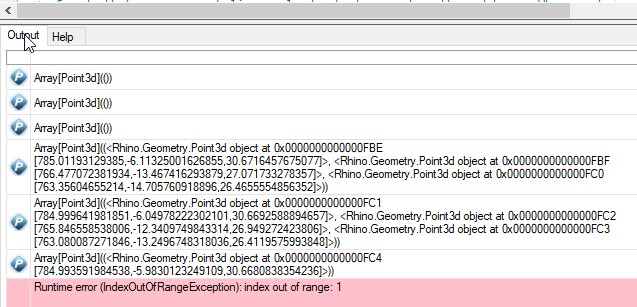@chris thanks again for your help. I don’t believe it’s a units issue considering all my geometry is internalized within gh.
I updated my Rhino v7 from 7.3 to 7.4 and now I’m seeing at index out of range error, which makes sense given the objects returned from the MeshLine intersection don’t always have more than one item.
 visibility_error.gh (39.1 KB)
visibility_error.gh (39.1 KB)
I tried it with some different geometries and had the same error in Rhino v7.4, so I’m guessing it’s something with my Rhino settings if it’s working for you, but just in case you want to test it I’ve attached a sample file that triggers the issue in Rhino v7.4.
I can make it work for me by editing the intersect.py file, but I’m still confused as to how the current code is working for you  in v7.4.
in v7.4.